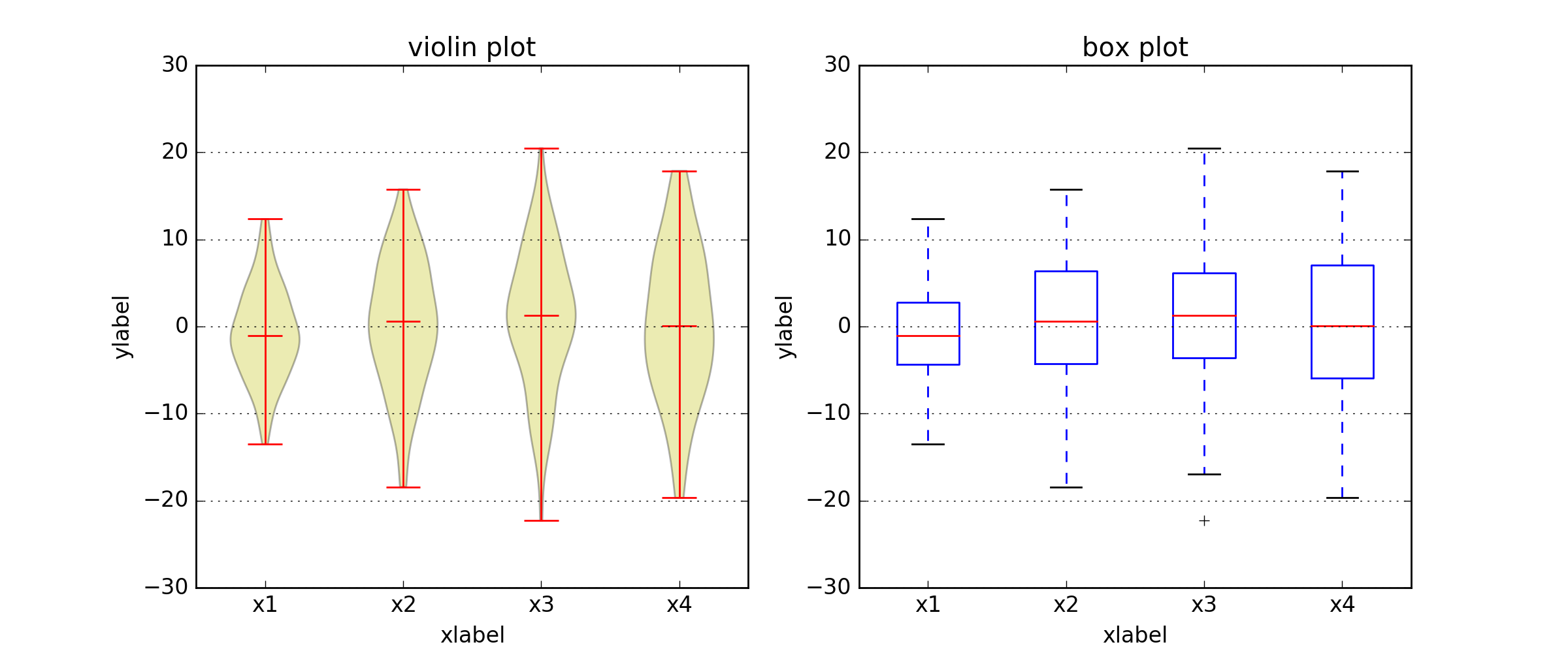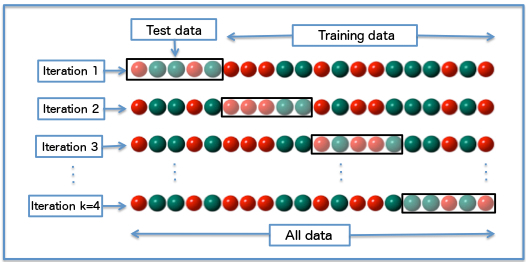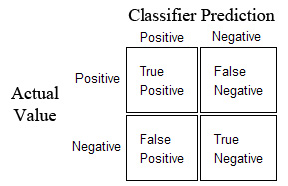2018, Oct 07
Game Of Thrones: Predicting Characters Deaths
1. Introduction¶
On this blogpost we will try to predcit the fate of Game Of Thrones characters using Machine Learning. We will learn how to analyze data and how to find the best model for a classification task.
2. Dependencies¶
For this task we will use the following libraries:
- Numpy: For matrix and vector operations
- Pandas: To load our data
- Seaborn and Matplotlib: To visualize data
- Sklearn: To train, create and validate our models with different hyper-parameters
# Import the necessary libraries
import numpy as np
import pandas as pd
import seaborn as sns
import matplotlib.pyplot as plt
from sklearn.linear_model import LogisticRegression
from sklearn import svm
from sklearn.ensemble import RandomForestClassifier
from sklearn.neighbors import KNeighborsClassifier
from sklearn.tree import DecisionTreeClassifier
from sklearn.model_selection import cross_val_score, cross_val_predict, GridSearchCV, KFold, train_test_split
from sklearn.metrics import roc_auc_score, accuracy_score, roc_curve
from sklearn.metrics import confusion_matrix, classification_report
# plots' parameters with seaborn
sns.set_style("whitegrid")
sns.set_context("notebook", font_scale = 1, rc = {"lines.linewidth": 2, 'font_family': [u'times']})
# Load our dataset
df = pd.read_csv("data/character-predictions.csv")
# Set seed for result reproductibility
seed = 42
np.random.seed(seed)
3. Data preprocessing¶
3.1 NAN values¶
The first thing i like to do when preprocessing my data is to check for NAN values.
# Check for NANs values
nans = df.isna().sum()
nans[nans > 0]
# Number of Data points
len(df)
As you can see in this dataset there are a fair number of them. Sometimes it is a good idea to replace the NAN values that appear in one of the attributes with the mean or median of said attribute. Let's try to that for the age column.
# Mean age
print(df["age"].mean())
This is interesting. Our mean age is a negative value. This most surely represents a mistake in our dataset. Let's explore further.
# Check which characters have a negative age and it's value.
print(df["name"][df["age"] < 0])
print(df['age'][df['age'] < 0])
These are definitely some mistakes in the data. Doreah is actually around 25 and Rhaego was never even born. So let's correct these values.
# Replace negative ages
df.loc[1684, "age"] = 25.0
df.loc[1868, "age"] = 0.0
# Mean is correct now
print(df["age"].mean())
3.2 Get Rid of NANs¶
There are multiple ways of dealing with NAN values. If you only a couple of samples which some attribute is a NAN, you might just be better off with dropping those samples entirely. In our case I think there are too many samples that contain NANs, so we can't just drop them all. We will fill the NANs that we can with the mean value of the columns and the rest we will just replace a -1 or empty string.
# Fill the nans we can
df["age"].fillna(df["age"].mean(), inplace=True)
df["culture"].fillna("", inplace=True)
# Some nans values are nan because we dont know them so fill them with -1
df.fillna(value=-1, inplace=True)
4. Data Analysis¶
4.1 Violin Plot¶
Violin plots are similar to box plots, except that they also show the probability density of the data at different values it is more informative than a plain box plot. In fact while a box plot only shows summary statistics such as mean/median and interquartile ranges, the violin plot shows the full distribution of the data.

Let's use some violing plots to visualize the distribution for both classes (alive, dead) in our dataset.
import warnings
warnings.filterwarnings('ignore')
f,ax=plt.subplots(2,2,figsize=(17,15))
sns.violinplot("isPopular", "isNoble", hue="isAlive", data=df ,split=True, ax=ax[0, 0])
ax[0, 0].set_title('Noble and Popular vs Mortality')
ax[0, 0].set_yticks(range(2))
sns.violinplot("isPopular", "male", hue="isAlive", data=df ,split=True, ax=ax[0, 1])
ax[0, 1].set_title('Male and Popular vs Mortality')
ax[0, 1].set_yticks(range(2))
sns.violinplot("isPopular", "isMarried", hue="isAlive", data=df ,split=True, ax=ax[1, 0])
ax[1, 0].set_title('Married and Popular vs Mortality')
ax[1, 0].set_yticks(range(2))
sns.violinplot("isPopular", "book1", hue="isAlive", data=df ,split=True, ax=ax[1, 1])
ax[1, 1].set_title('Book_1 and Popular vs Mortality')
ax[1, 1].set_yticks(range(2))
plt.show()
These plots are usually used to represent the full distribution of the data around some values. For example: On the first plot we can see the distribution of both of our classes (alive or dead) on 4 points: isNoble = 0 and isPopular = 0 isNoble = 1 and isPopular = 0 and so on.
4.2 Summary¶
- Noble and popular most likely alive
- Popular appearing in book1 most likely dead
- Not popular appearing in book1 most likely alive
- Single and not popular most likely alive
- Single and popular probably dead
As you can see maximizing your chances of surviving the Game Of Thrones is super easy: Just be a Popular Married Female Noble and get yourself written into book 1 (Cersei Lannister, Asha Greyjoy, Daenerys Targaryen, Sansa Stark, Selyse Florent). Ha! Take that George R. R. Martin.
df.columns[:20]
4.3 Culture¶
Let's take a look into the culture column of our dataset:
# Get all of the culture values in our dataset
set(df['culture'])
As you can see there are many different values for just one culture. For example: summer islands we have 3 different values: summer islands, summer islander, summer isles. This happens for many of the culture values appearing in our data, so let's put the names representing the same culture under just one name.
# Lots of different names for one culture so lets group them up
cult = {
'Summer Islands': ['summer islands', 'summer islander', 'summer isles'],
'Ghiscari': ['ghiscari', 'ghiscaricari', 'ghis'],
'Asshai': ["asshai'i", 'asshai'],
'Lysene': ['lysene', 'lyseni'],
'Andal': ['andal', 'andals'],
'Braavosi': ['braavosi', 'braavos'],
'Dornish': ['dornishmen', 'dorne', 'dornish'],
'Myrish': ['myr', 'myrish', 'myrmen'],
'Westermen': ['westermen', 'westerman', 'westerlands'],
'Westerosi': ['westeros', 'westerosi'],
'Stormlander': ['stormlands', 'stormlander'],
'Norvoshi': ['norvos', 'norvoshi'],
'Northmen': ['the north', 'northmen'],
'Free Folk': ['wildling', 'first men', 'free folk'],
'Qartheen': ['qartheen', 'qarth'],
'Reach': ['the reach', 'reach', 'reachmen'],
'Ironborn': ['ironborn', 'ironmen'],
'Mereen': ['meereen', 'meereenese'],
'RiverLands': ['riverlands', 'rivermen'],
'Vale': ['vale', 'valemen', 'vale mountain clans']
}
def get_cult(value):
value = value.lower()
v = [k for (k, v) in cult.items() if value in v]
return v[0] if len(v) > 0 else value.title()
df.loc[:, "culture"] = [get_cult(x) for x in df["culture"]]
4.4 Dropping Columns¶
In this dataset that are some columns that make the prediction of a character's death unnecessary. For example: DateoFdeath already tells you that that character died (unless it's a NAN), plod tells you the probability that a character is dead, and so on.
We will the drop columns that outright tells you if a character is dead or no, otherwise we would be cheating.
There are also some columns that are useless for our task, like S.No which is basically an incremental identifier for each sample, and name which is the name of the character. We will drop these columns as well.
# Drop columns
drop = ["S.No", "pred", "alive", "plod", "name", "isAlive", "DateoFdeath"]
df.drop(drop, inplace=True, axis=1)
# Save a copy of the dataset before one-hot encoding the features
# we will use this later
df2 = df.copy(deep=True)
4.5 One-Hot Encoding vs Factorizing¶
4.5.1 One-Hot Encoding¶
One hot encoding refers to the process of turning categorical variables into vectors representing the same information in a way that can be fed into a Machine Learning model.

In this example Color is categorical variable that can only take 3 possible values: Red, Yellow and Green. So to feed this to a model we turn Red into a vector with 3 elements where every position is 0 except the first one, which is 1. We repeat the process for Green but place the 1 on the second position and so on for every other possibble value our categorical variable can take.
4.5.2 Factorizing¶
You might wonder why not just assign one wonder to each value that the categorical variable takes, e.g (Red=1, Yellow=2, Green=3). Well, you could do this, and it will work to an extent, but it depends on your data.
Remember these numbers will be fed into the model and some operations will be performed on them. If you choose this approach the model might learn that Green is more important than Red which in our case is not what we want.
For this particular dataset i've chosen to use the One-Hot encoding approach.
# Let's turn our categorical features into one-hot encoded variables
df = pd.get_dummies(df)
# Separate our labels from our features
x = df.iloc[:,1:].values
y = df.iloc[:, 0].values
5. Evaluating Classifiers¶
We will now proceed to feed our data to different models and evaluate the performance of each one.
5.1 Cross-Validation¶
In Machine Learning there are several ways the split your data into training and test sets in order to determine how a model performs on them, making sure that our model performs well no matter how the data is partitioned.
Suppose we have a model with one or more unknown parameters, and a data set to which the model can be fit (the training data set). The fitting process optimizes the model parameters to make the model fit the training data as well as possible. If we then take an independent sample of validation data from the same population as the training data, it will generally turn out that the model does not fit the validation data as well as it fits the training data. The size of this difference is likely to be large especially when the size of the training data set is small, or when the number of parameters in the model is large. Cross-validation is a way to estimate the size of this effect.
There are many different methods to perform cross validation, they can be found here).
I usually use the K-Fold method which consists in splitting your dataset in K different groups, perforiming training and validation with each of them.

This approach allows us to evaluate the model in a more reliable way, making sure that it performs well all across the data and not on some specific split.
# Split data into 5 equal groups for validation
kfold = KFold(n_splits=5, shuffle=True, random_state=seed)
5.2 Models¶
I will not go into the inner working of each of the models that I use since this is not the purpose of the blog. For a full explanation of each model you visit:
# Let's build different models to train with our data
models = [LogisticRegression(solver='liblinear'), RandomForestClassifier(n_estimators=400, random_state=seed),
DecisionTreeClassifier(random_state=seed), svm.SVC(kernel='rbf', gamma='scale', random_state=seed),
KNeighborsClassifier()]
# Validate each model using K-fold cross validation
mean=[]
std=[]
for model in models:
result = cross_val_score(model, x, y, cv=kfold, scoring="accuracy", n_jobs=-1)
mean.append(result)
std.append(result)
5.3 Visualize the Performance¶
classifiers=['Logistic Regression', 'Random Forest', 'Decision Tree', 'SVM', 'KNN']
plt.figure(figsize=(10, 10))
for i in range(len(mean)):
sns.distplot(mean[i], hist=False, kde_kws={"shade": True})
plt.title("Distribution of each classifier's Accuracy", fontsize=15)
plt.legend(classifiers)
plt.xlabel("Accuracy", labelpad=20)
plt.yticks([])
plt.show()
It seems like Random Forest is the most reliable model when maximizing accuracy since its standard deviation is low and thus the accuracy values it yields do not vary much.
Our SVM perform much worse than expected let's see if we can improve them with some tuning.
We will continue onward analyzing these 2 models more in depth: since the Random Forest shows the highest potential and since our SVM can probably do much better if we tune it's hyper-parameters a little.
5.4 Grid Search¶
Grid search in basic sense, is a brute force method to estimate hyper-parameters. Say you have k hyper-parameters, and each one of them have c bpossible values. Then, performing grid search is basically taking a Cartesian product of these:
So you end up having: $\prod_{c=1}^{k}c_i$ possible combinations of hyper-parameters. Running a model so many times it's inneficient but we will use it nonetheless.
For a more efficient hyper-parameter search algorithm, take a look at Random Search
c = [0.1, 0.3, 0.5, 0.7, 0.9]
gamma = [0.1, 0.3, 0.5, 0.7, 0.9]
kernel = ['rbf','linear']
hyper_parameters = {'kernel': kernel, 'C': c, 'gamma': gamma}
gs = GridSearchCV(estimator=svm.SVC(), param_grid=hyper_parameters,verbose=True, cv=kfold, n_jobs=-1)
# Find the best hyper-parameters using grid-search (this might take a while)
gs.fit(x,y)
print(gs.best_score_)
print(gs.best_estimator_)
Indeed it seems like our svm can perform much better with some tuning achieving an accuracy of 83%. This shows the importance of using the right hyper-parameters for any model.
5.5 Predictions¶
Now that we know the best models we can train them with our data and make a deeper analysis of their performance. Since we know the best models to further evaluate them we will use Hold-Out (split the data 80/20 into train and test set), just to keep the code simple.
# Split data keeping 80% for training and the rest for test
x_train, x_test, y_train, y_test = train_test_split(x, y, test_size=0.2, stratify=y,
shuffle=True, random_state=seed)
%%capture
# Now that we know the best configuration we can use it to predict character deaths
svm_clf = svm.SVC(C=0.9, gamma=0.1, kernel='rbf', probability=True, random_state=seed)
rf_clf = RandomForestClassifier(n_estimators=400, n_jobs=-1, random_state=seed)
# Train our classfiers
svm_clf.fit(x_train, y_train)
rf_clf.fit(x_train, y_train)
# Get the probability of assigning each sample to either class
svm_prob = svm_clf.predict_proba(x_test)
rf_prob = rf_clf.predict_proba(x_test)
# Get the actual predictions
svm_preds = np.argmax(svm_prob, axis=1)
rf_preds = np.argmax(rf_prob, axis=1)
cm = confusion_matrix(y_test, svm_preds)
cm = cm.astype('float') / cm.sum(axis=1)[:, np.newaxis]
cm2 = confusion_matrix(y_test, rf_preds)
cm2 = cm2.astype('float') / cm2.sum(axis=1)[: , np.newaxis]
classes = ["Dead", "Alive"]
f, ax = plt.subplots(1, 2, figsize=(15, 5))
ax[0].set_title("Normalized SVM Confusion Matrix", fontsize=15.)
sns.heatmap(pd.DataFrame(cm, index=classes, columns=classes),
cmap='winter', annot=True, fmt='.2f', ax=ax[0]).set(xlabel="Predicted Class", ylabel="Actual Class")
ax[1].set_title("Normalized Random Forest Confusion Matrix", fontsize=15.)
sns.heatmap(pd.DataFrame(cm2, index=classes, columns=classes),
cmap='winter', annot=True, fmt='.2f', ax=ax[1]).set(xlabel="Predicted Class",
ylabel="Actual Class")
plt.show()
We can see that both of our models perform reasonably well on samples belonging to the Dead class and very well on samples belonging to the rest.
6.2 ROC Curve¶
So far we have only measured the accuracy of a model but there are many more metrics that are important and must be taken into account. In fact, accuracy is not the best metrics because it is heavily misleading when there is a class imbalance. For example, consider a dataset where 99% of the samples belong to class 0 and 1% of the samples belong to class 1. In this case if model just learns to classify everyhing as class 0, it will reach an accuracy of 99%, and yet this is not a good model.
The ROC (Receiver Operating Characteristics) Curve is a way of visualizing how well our model distinguishes between classes, the higher the area under the curve AUC the better the model. This is a much better indicator of a model's performance than just the accuracy.
You can find a much more detailed explanation of this metric here
fig = plt.figure(figsize=(10, 10))
plt.plot(*roc_curve(y_test, svm_prob[:, 1])[:2])
plt.plot(*roc_curve(y_test, rf_prob[:, 1])[:2])
plt.legend(["SVM Classifier", "Random Forest Classifier"], loc="upper left")
plt.plot((0., 1.), (0., 1.), "--k", alpha=.7)
plt.xlabel("False Positive Rate", labelpad=20)
plt.ylabel("True Positive Rate", labelpad=20)
plt.title("ROC Curves", fontsize=10)
plt.show()
6.3 More Metrics¶
For a full analysis of the model's performance let's evaluate the following metrics:
- Precision: $\frac{TP}{TP + FP}$ This indicates how precise is the model when classifying positives samples
- Recall: $\frac{TP}{TP + FN}$ This indicates how well our model finds positives samples out of all the positives samples.
So, what is better, maximizing precision or maximizing recall? Well this depends on what the model is for. If the cost of a False Positive is high then you might be better of just maximizing your precision. But if the cost of Missing a Positive example then you should maximize recall.
For the cases where both recall and precision must be as high as possible, we can use yet another metric:
- F1-Score: $2*\frac{Precision*Recall}{Precision + Recall}$ Maximizing this metric will yield a nice balance between precision and recall
6.4 Precision-Recall Curve¶
A good way to visualize this precision-recall relation is a precision-recall curve. Let's plot one for our Random Forest
from sklearn.metrics import precision_recall_curve
import matplotlib.pyplot as plt
from sklearn.utils.fixes import signature
precision, recall, _ = precision_recall_curve(y_test, rf_prob[:, 1])
step_kwargs = ({'step': 'post'}
if 'step' in signature(plt.fill_between).parameters
else {})
plt.step(recall, precision, color='b', alpha=0.2,
where='post')
plt.fill_between(recall, precision, alpha=0.2, color='b', **step_kwargs)
plt.xlabel('Recall')
plt.ylabel('Precision')
plt.ylim([0.0, 1.05])
plt.xlim([0.0, 1.0])
plt.title('Precision-Recall curve')
# So lets take a look at how each model performs on each metric
print("SVM Classifier Performance")
print("=" * 27)
print(classification_report(y_test, svm_preds, target_names=classes))
print("Accuracy: {:.2f}".format(accuracy_score(y_test, svm_preds)))
print("AUC score: {:.2f}".format(roc_auc_score(y_test, svm_prob[:, 1])))
print("\n")
print("Random Forest Classifier Performance")
print("=" * 37)
print(classification_report(y_test, rf_preds, target_names=classes))
print("Accuracy: {:.2f}".format(accuracy_score(y_test, rf_preds)))
print("AUC score: {:.2f}".format(roc_auc_score(y_test, rf_prob[:, 1])))
print("\n")
It seems that our Random Forest outperforms our SVM slightly, specially distinguishing between negatives and positives examples as indicated by the AUC score.
6.5 Feature Importance¶
Finally we can take a look inside our model, and learn what features it considers important in order to classify a sample from our dataset.
Since the use of dummy variables(created by the One-Hot Encoding), yields a very large amount of features, it is hard to visualize the feature importance.
Let's factorize our features instead and train our models with the factorized data. Even though it isn't the best approach for processing data it will work just fine for feature importance visualization.
# Factorize our categorical features
df2.loc[:, "title"] = pd.factorize(df2["title"])[0]
df2.loc[:, "culture"] = pd.factorize(df2["culture"])[0]
df2.loc[:, "mother"] = pd.factorize(df2["mother"])[0]
df2.loc[:, "father"] = pd.factorize(df2["father"])[0]
df2.loc[:, "heir"] = pd.factorize(df2["heir"])[0]
df2.loc[:, "house"] = pd.factorize(df2["house"])[0]
df2.loc[:, "spouse"] = pd.factorize(df2["spouse"])[0]
# Split data from labels
x = df2.iloc[:,1:].values
y = df2.iloc[:, 0].values
df2.drop(["actual"], inplace=True, axis=1)
rf_clf.fit(x,y)
# Plot the 10 most important features
plt.figure()
pd.Series(rf_clf.feature_importances_,
df2.columns).sort_values(ascending=True)[15:].plot.barh(width=0.5,ax=plt.gca())
plt.gca().set_title('Random Forest Feature Importance')
It seems that popularity is the factor that our Random Forest listens to the most in order to determine if some character will die. This makes sense, since it is much more likely that an unpopular character dies just because there are many more of them, and even though George R. R. Martin is known for killing popular characters more often than most writers, it seems that he kills unpopular characters even more.
7. Conclusion¶
In this post we learned how to pre-process data to solve a classification problem, how to determine the best model for a task and the best hyper-parameters for a model. We also saw the different ways which you can evaluate a classifier and what metric to maximize depending on the task at hand. Finally we learned how to take a look inside a model in order to gain an insight of what features it considers important for the task it performs.

